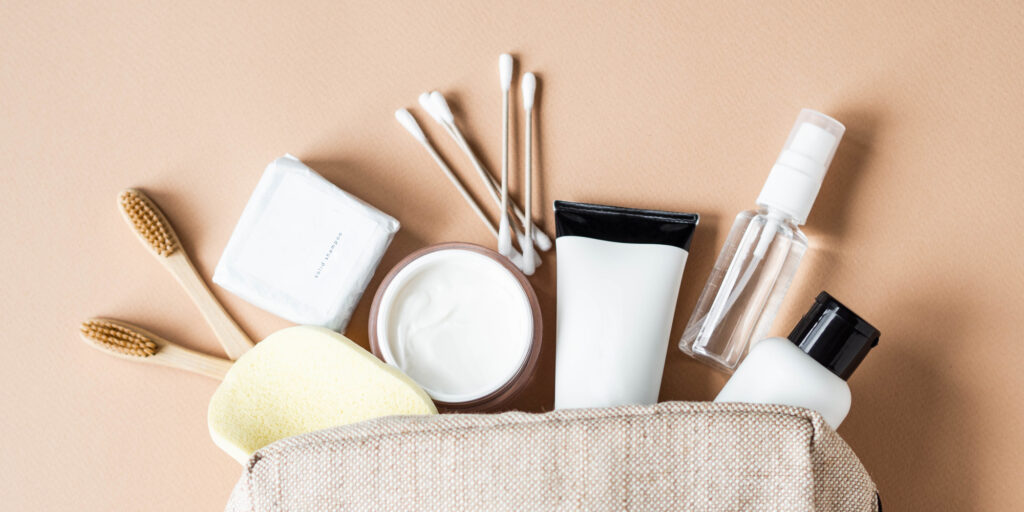
Tips for Better Hygiene With a Disability — And Why It Matters
By Elizabeth Millard | Sunday, October 2, 2022
From brushing your teeth to washing your hair, cleansing routines are essential for everyone’s overall health, but for those with neuromuscular diseases, good hygiene can be even more crucial — and more challenging.
“Good hygiene is essential for maintaining healthy skin, which is important for those with contractures or who are prone to skin breakdown,” says Kelly Keim-Johnson, OTRL, physical medicine and rehabilitation supervisor at Beaumont Health System in Royal Oak, Michigan.
Poor hygiene could lead to a number of health and social issues. For example, poor dental hygiene can lead to tooth decay and gum disease. Not washing hands can spread infections, such as colds and flu. And skipping bathing can result in body odor and sores.
“Good hygiene can help you feel more confident about being around other people,” Kelly says.

Occupational therapists like Katie Metheny help their clients make daily tasks and routines easier.
Also, good hygiene practices tend to bring a sense of independence, adds Katie Metheny, OT, an occupational therapist (OT) at Baylor Scott & White Institute for Rehabilitation in Dallas, Texas. “Most people I see want to be able to do these tasks for themselves as long as possible, which means that making them easier is important,” she says.
Top tip: Conserve your energy
Listed below are specific strategies and products that can be helpful, but the key aspect of using any of them is energy conservation, says Kelly. While it’s ideal to have products that are suitable for your level of mobility, even those won’t help if you’re too fatigued to use them.
“We’ve worked with people who have severe muscle weakness and can’t raise their arms or have difficulty going from sitting to standing,” she notes. “When that’s happening, it’s often not about building more strength, it’s about adapting their activities in a way that helps them conserve their energy.”
Hygiene tasks, particularly those involving lengthy routines, can be exhausting. It’s useful to structure these tasks in a way that requires less effort — for example, showering every few days instead of every day, or breaking long routines into short tasks and allowing time for recovery in between. Each person should develop a tailored hygiene plan based on their energy needs, says Kelly.
Easy-to-use hygiene products
When trying different tools and techniques, the emphasis should always be on making it easier to do specific tasks, says Katie.
Here are some worth considering:
- Dry shampoo: This can help you go longer between showers or baths, without feeling like your hair is getting dirty or greasy. There are also dry shampoo caps, which look like shower caps, that let you clean your hair without getting dry shampoo on your shoulders.
- Hand mitt for scrubbing: Maneuvering a washcloth can be tricky, but an exfoliating glove makes it easier. When you’re done, drop the mitt on the floor of the shower and rub your feet on it to get your feet clean without having to bend over.
- Foam grip tubes: Looking like tiny pool noodles, these can be cut to size and put around the handles of items like razors or toothbrushes for better grip.
- Mouthguard toothbrushes: If it’s difficult to brush with a traditional toothbrush, try an electric toothbrush shaped like a bite guard. It vibrates to cleanse teeth without having to move it around your mouth.
There are also numerous larger items, like shower and bath chairs, bath lifts, bidets, sitz baths, and portable showers and baths, that can make cleansing more accessible. Read Easy Clean: Bathing Products for People With Disabilities to learn about assistive bathing and showering tools.
5 tips to keep clean
It may take some trial and error to find strategies that are a good fit for you. Here are some that OTs recommend:
- Sit down when doing tasks like drying your hair or brushing your teeth.
- For scrubbing or brushing, use a long-handled sponge or a brush with a loop on one end that goes around your wrist. These can reduce the amount of movement you need to do, especially for tasks that involve reaching overhead, like brushing your hair.
- Consider a sponge bath on the days you don’t shower, so you can stay clean without the full bathing routine.
- Use smaller, lighter bottles for your products. Although big bottles are often cheaper, they can be heavy to lift and cause fatigue. Transfer product from a big bottle into a smaller one. A bottle with a pump may be easiest to use.
- If you menstruate, using a period-tracking app can help you predict when your next period will start. Menstrual pads worn with underwear are easy for an individual or caregiver to change.
Your OT is a great resource for ideas on products and techniques that will help with your daily tasks and routines. Be sure to tell them about movements or tasks that are challenging for you. As Kelly notes, sometimes the best solutions are ones you and your OT create together.
Next Steps and Useful Resources
- Learn about products that make your tub and shower more accessible.
- Put your best face forward with accessible beauty hacks.
- Many MDA Care Centers have occupational therapists on their care teams.
- If you have a question or problem, the MDA Resource Center may be able to help.
Disclaimer: No content on this site should ever be used as a substitute for direct medical advice from your doctor or other qualified clinician.




